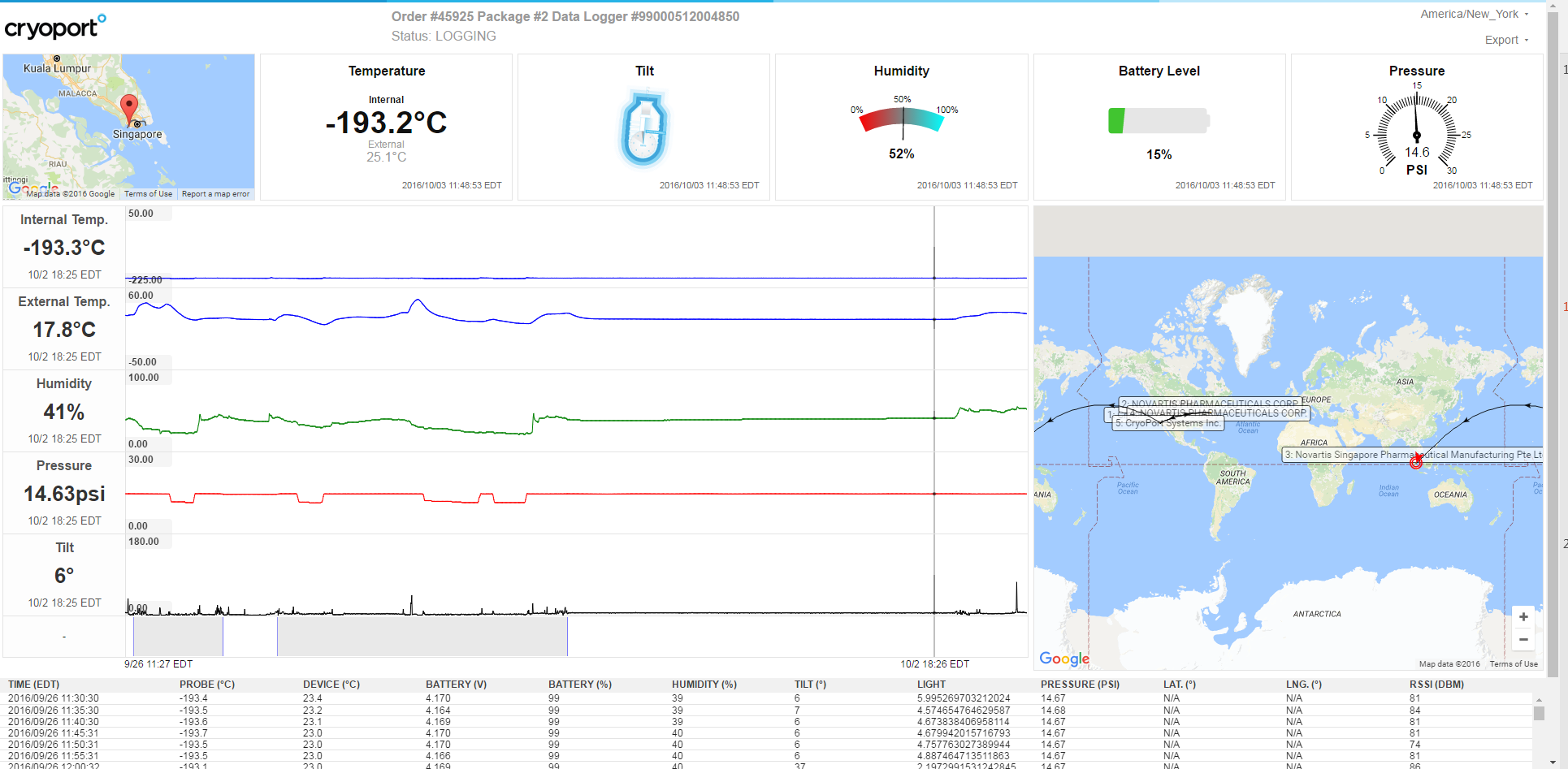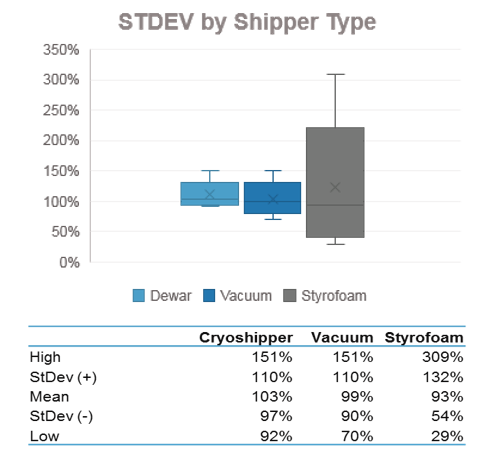Packaging, IT and Cold-Chain Logistics Advances for the Future of Medicine and Clinical Trials
Logistics can have a direct and measurable scientific impact on development, clinical performance and commercialization success of advanced drug therapeutics.
Perhaps the biggest advancement for the future of medicine and clinical trials logistics is the realization that logistics has a direct and measurable scientific impact on development, clinical performance and commercialization success of advanced drug therapeutics. Modern drug development, especially related to personalized medicine, has necessitated increasingly complex cold-chain logistics in order to ensure the quality of not only the drug, but the bioanalytical material (pre-/clinical samples and critical reagents) as well. Inherent to the added complexity are the potential for logistically and scientifically relevant pain points that require new and innovative solutions to overcome. These solutions include advances in cold-chain packaging designed to avoid temperature excursions using safe, non-hazardous refrigerants that can go from the manufacturing site all the way to the point of care, seamless integration with IT solutions that can capture real-time logistics, temperature and product quality data for data-driven logistics decision making. Most importantly, a better understanding of the effects of refrigerants, temperature excursions and logistics effects on the quality of the product/material being shipped and the resultant clinical data is badly needed.
The key technology that enables a complete understanding of the logistics effects on the quality of biological material is the advent of cellular enabled real-time temperature and logistics monitors combined with cloud-based IT systems for real time data collection/management. These data-loggers not only record and transmit the temperature inside the sample container, but also a wide range of logistics and transportation factors that affect the quality of biological material. These factors include environmental considerations that impact the dynamic hold time of a given cold-chain packaging solution such as humidity and external temperature as well as, and of increasing relevance, handling effects such as shock and vibration.1


The influx of real-time payload quality and carrier performance data has led to the development of “intelligent-logistics,” where logistics decisions are increasingly data-driven by product quality and efficiency considerations and can be utilized to make transit related logistics decisions en route to protect critical materials.2 The supply chain transparency inherent to intelligent logistics allows effective management of and response to supply chain challenges for increased chain-of-custody and condition security. For example, light sensors and GPS capabilities are available to ensure efficient transport, security and detect tampering and/or mitigate product loss. The collection, management and reporting of this data in a regulatory compliant manner3 has elevated the science of logistics to an important determinant in drug development and commercialization, and offers opportunities for quality by design operational control and fleet management as well as improved reverse logistics.
Most importantly, it is now possible to monitor, quantify and directly correlate logistics effects/carrier performance to product quality. To this point, there are few if any studies that have investigated the effect of dynamic logistics, packaging and refrigerant on the quality of drug product and bioanalytical material, and therefore, the understanding of what actually happens to material while in transit is quite limited.
Numerous studies have been done on the thermal performance of packaging as well as the effects of temperature volatility and refrigerant on the quality of drug product or bioanalytical material in a static lab setting.5, 7-9 In fact, it is standard industry practice to qualify, validate and accept claims about packaging performance (hold-time, temperature variability, etc.) based on data collected in a static environment in addition to a single live field test under the assumption that the performance of that new shipper will correlate directly with real-world dynamic logistics performance over time.4
In practice, however, real-world logistics does affect the performance of the packaging. Damage to the packaging or orientation affects the rate at which the refrigerant evaporates/sublimates/transitions. Shock events or vibration inherent to transport as well as temperature excursions and refrigerant may affect the stability of a drug product or clinically relevant analyte. Also, and most importantly, the performance of reusable packaging will change with usage over time as logistics effects become cumulative and the properties of the package change. A lack of understanding of these effects can lead to shipper failure, sub-optimal logistics strategies and ultimately, underperformance or loss of critical material.


In a recent bioanalytical study, Cryoport, in cooperation with Kansas City Analytical Services and Heat Biologics, investigated packaging, refrigerant and real-world logistics effects on the quality of bioanalytical material as measured by biomarker recovery in human plasma samples and cell-viability using a GMP working cell bank. The study found that the temperature volatility in a standard Styrofoam dry ice shipper as well as a higher-end vacuum panel dry ice shipper was 14.1 and 7.6oC respectively, whereas the thermal volatility in cryogenic dry vapor shippers was only 0.7oC. The dry ice packaging, in agreement with the literature5, also had an acidifying effect (not observed in the cryogenic dry vapor shipper) of up to 1.6 points on the pH scale. The end result was a significant drop in sample quality (higher %CV for in general and much lower recovery for the most labile biomarkers) as well as up to a 60% drop in cell viability for cells transported on dry ice when compared to baseline control. There was no significant difference for either biomarker recovery or cell viability for material transported cryogenically, indicating that cryogenic transport is not only safe, but critical for optimal sample quality.
Curiously, when the acidifying properties of dry ice and temperature excursions were investigated in a static lab environment by intentionally acidifying biomarker samples using blown CO2 or subjecting samples to similar temperature excursions observed dynamically in a shipper that was not shipped, similar drops in sample quality were not observed. This indicates that it is in fact these factors in combination with the real-world logistics effects that caused the decrease in sample quality.
The novel finding that logistics effects play an integral role in determining the quality of biological material further illustrates the need for real-world dynamic testing throughout supply chains not only of the packaging itself, but also of the material being shipped. The study described above demonstrates that long-standing standards and practices related to proper shipping conditions for bioanalytical material may be detrimental, and that those processes have the potential to be optimized by investigating product quality through a logistics strategy within alternate temperature bands. Logistics decisions should be subject to the same scientific rigor as other drug development activities, as it truly is the platform system on which manufacturing, bioanalytical development and commercialization depends. Advances in now commercially available validated and regulatory compliant logistics monitoring/data management systems have finally made this possible.
Additionally, an intelligent logistics strategy is not only critical in ensuring material quality, but also an important risk mitigation strategy. As we better understand how logistics considerations affect the quality of biological material and report that data in a regulatory compliant manner, the industry, through evolving GDP standards, is now able to demonstrate that quality is maintained throughout the supply chain and that product/sample condition and subsequent bioanalytical data is accurate and trustworthy. Early adopters of this approach have already enjoyed a significant increase in drug development/commercialization efficiency as is demonstrated by the $1.6M estimated annual savings in product commercialization costs of a world-leading animal vaccine producer.6 This data, extrapolated biopharmaceutical industry wide, will amount to billions of dollars’ worth of saving in drug development costs alone.
Lastly, the quality of drug product and bioanalytical data, such as those derived from PK and biomarker samples, are the key drivers for determining not only the course of bioanalytical/commercial development, but also clinical safety and efficacy. Ensuring that these determinants are optimized through transport ensures that manufacturing and bioanalytical assay performance quality is maintained for trustworthy data and informed development, and certainly not least, that effective clinical decisions are made for the best patient outcomes possible.
Robert L. Moore, Ph.D., is Sales Director at Cryoport, a provider of cryogenic logistics solutions to the life sciences industry. He can be contacted at (949) 681-2763 or rmoore@cryoport.com
References
- Cryoport. SmartpakII Condition Monitoring System Brochure. Cryoport Resources. [Online] November 18, 2016. http://www.cryoport.com/resources/smart-pak-ii-condition-monitoring-system-brochure.
- Intelligent Logistics. Cryoport. [Online] 11 18, 2016. [Cited: 11 18, 2016.] http://www.cryoport.com/why-cryoport/intelligent-logistics.
- U.S. Department of Health and Human Services, Food and Drug Administration. Code of Federal Regulations Title 21, Part 11: Electronic Records; Electronic Signatures. Food and Drug Administration. [Online] 11 2018, 2016. https://www.accessdata.fda.gov/scripts/cdrh/cfdocs/cfcfr/CFRSearch.cfm?CFRPart=11.
- Cold Chain Technologies. Thermal Packaging Qualification. Cold Chain Technologies. [Online] 11 18, 2016. http://www.coldchaintech.com/thermal-packaging-qualification/.
- Protein instability following transport or storage on dry ice. Murphy BM, Swarts S, Mueller BM, van der Geer P, Manning MC, Fitchmun MI. 2013, Nature Methods, pp. 278-279.
- Cryoport. Cryoport Wins 2016 Cold Chain Global Forum Excellence Award. Cryoport Investor Relations. [Online] 10 4, 2016. [Cited: 11 18, 2016.] http://ir.cryoport.com/news-releases/2016/10-04-2016-130528372.
- Best Practices for Repositories: Collection, Storage, Retrieval and Distribution of. 2011, International.
- Viable mononuclear cell stability study for implementation in a proficiency testing program: impact of shipment conditions. Kofanova OA, Davis K, Glazer B, De Souza Y, Kessler J, Betsou F. 2014, Biopreserv Biobank, pp. :206-216.
- Shipping blood to a central laboratory in multicenter clinical trials: effect of ambient temperature on specimen temperature, and effects of temperature on mononuclear cell yield, viability and immunologic function. Olson WC, Smolkin ME, Farris EM, et al. 2011, Transl Med., p. 9:26.
Improving Relationships and Diversifying the Site Selection Process
April 17th 2025In this episode of the Applied Clinical Trials Podcast, Liz Beatty, co-founder and chief strategy officer, Inato, discusses a number of topics around site engagement including community-based sites, the role of technology in improving site/sponsor relationships, how increased operational costs are impacting the industry, and more.
Behind the Buzz: Why Clinical Research Leaders Flock to SCOPE Summit
February 7th 2025In this episode, we meet with Micah Lieberman, Executive Conference Director for SCOPE Summit (Summit for Clinical Ops Executives) at Cambridge Innovation Institute. We will dive deep into the critical role of collaboration within the clinical research ecosystem. How do we bring together diverse stakeholders—sponsors, CROs, clinical trial tech innovators, suppliers, patients, sites, advocacy organizations, investors, and non-profits—to share best practices in trial design, program planning, innovation, and clinical operations? We’ll explore why it’s vital for thought leaders to step beyond their own organizations and learn from others, exchanging ideas that drive advancements in clinical research. Additionally, we’ll discuss the pivotal role of scientific conferences like SCOPE Summit in fostering these essential connections and collaborations, helping shape the future of clinical trials. Join us as we uncover how collective wisdom and cross-industry partnerships are transforming the landscape of clinical research.